Irène Gannaz
G-SCOP\_GROG, G-SCOP
G{é}n{é}ration de Matrices de Corr{é}lation avec des Structures de Graphe par Optimisation Convexe
Mar 27, 2025Abstract:This work deals with the generation of theoretical correlation matrices with specific sparsity patterns, associated to graph structures. We present a novel approach based on convex optimization, offering greater flexibility compared to existing techniques, notably by controlling the mean of the entry distribution in the generated correlation matrices. This allows for the generation of correlation matrices that better represent realistic data and can be used to benchmark statistical methods for graph inference.
Generating Correlation Matrices with Graph Structures Using Convex Optimization
Feb 25, 2025Abstract:This work deals with the generation of theoretical correlation matrices with specific sparsity patterns, associated to graph structures. We present a novel approach based on convex optimization, offering greater flexibility compared to existing techniques, notably by controlling the mean of the entry distribution in the generated correlation matrices. This allows for the generation of correlation matrices that better represent realistic data and can be used to benchmark statistical methods for graph inference.
Outlier detection in multivariate functional data through a contaminated mixture model
Jun 14, 2021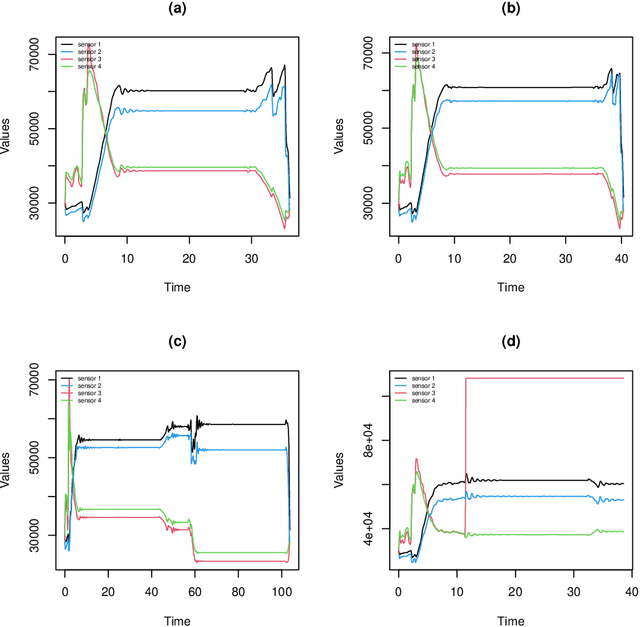

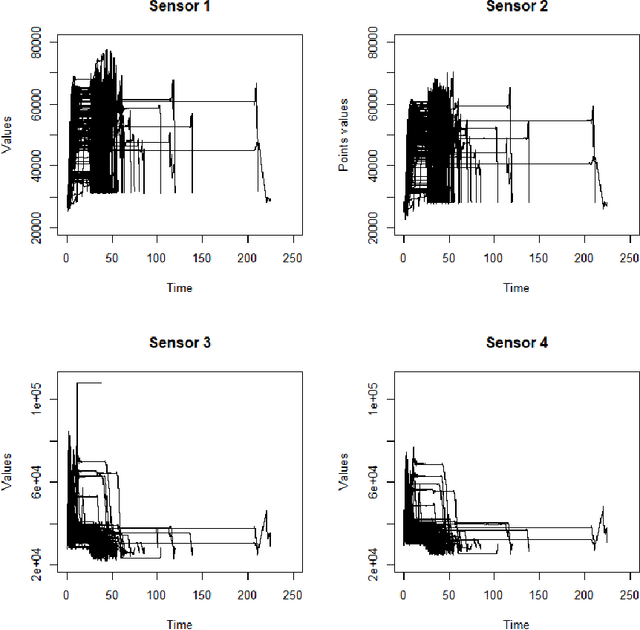
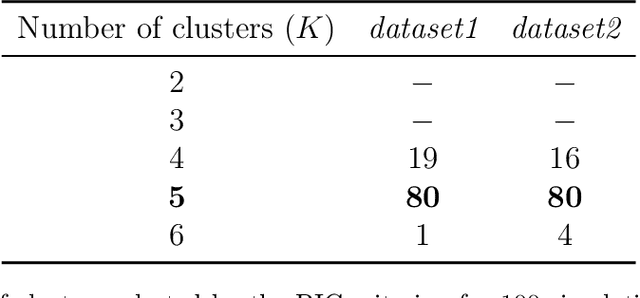
Abstract:This work is motivated by an application in an industrial context, where the activity of sensors is recorded at a high frequency. The objective is to automatically detect abnormal measurement behaviour. Considering the sensor measures as functional data, we are formally interested in detecting outliers in a multivariate functional data set. Due to the heterogeneity of this data set, the proposed contaminated mixture model both clusters the multivariate functional data into homogeneous groups and detects outliers. The main advantage of this procedure over its competitors is that it does not require us to specify the proportion of outliers. Model inference is performed through an Expectation-Conditional Maximization algorithm, and the BIC criterion is used to select the number of clusters. Numerical experiments on simulated data demonstrate the high performance achieved by the inference algorithm. In particular, the proposed model outperforms competitors. Its application on the real data which motivated this study allows us to correctly detect abnormal behaviours.
A Note on Data Simulations for Voting by Evaluation
Apr 15, 2021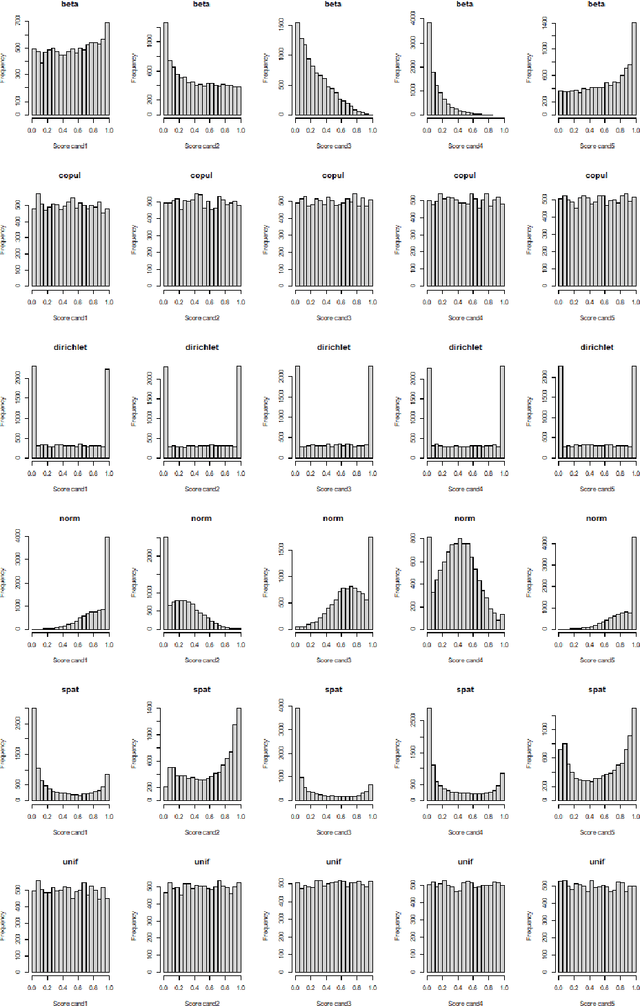
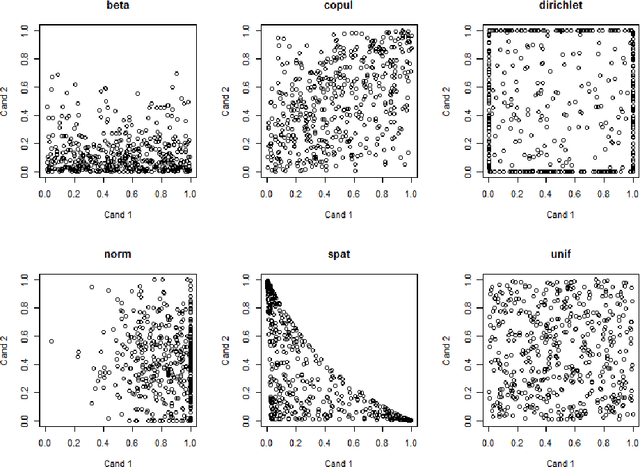
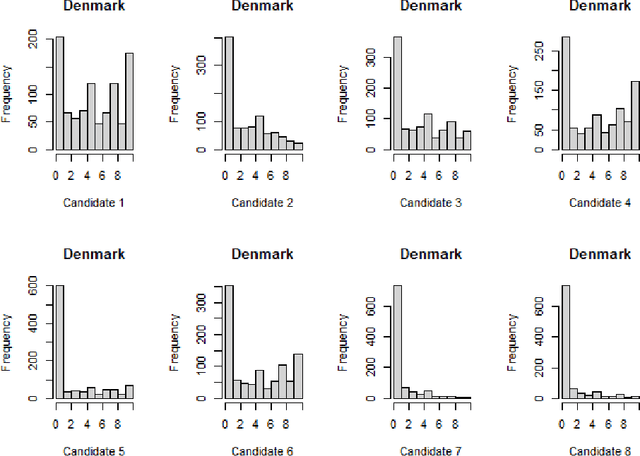

Abstract:Voting rules based on evaluation inputs rather than preference orders have been recently proposed, like majority judgement, range voting or approval voting. Traditionally, probabilistic analysis of voting rules supposes the use of simulation models to generate preferences data, like the Impartial Culture (IC) or Impartial and Anonymous Culture (IAC) models. But these simulation models are not suitable for the analysis of evaluation-based voting rules as they generate preference orders instead of the needed evaluations. We propose in this paper several simulation models for generating evaluation-based voting inputs. These models, inspired by classical ones, are defined, tested and compared for recommendation purpose.
 Add to Chrome
Add to Chrome Add to Firefox
Add to Firefox Add to Edge
Add to Edge